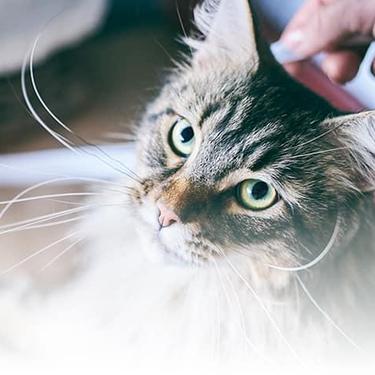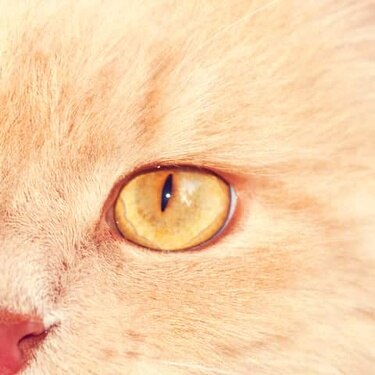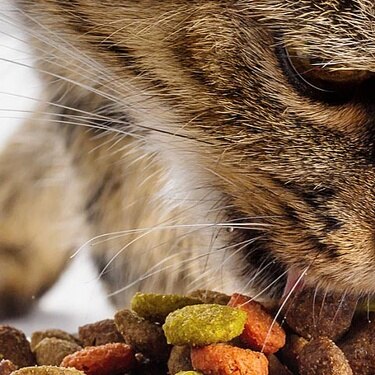
-
Find the right food for your petTake this quiz to see which food may be the best for your furry friend.Find the right food for your petTake this quiz to see which food may be the best for your furry friend.Featured products
 Mature Adult Dog Food
Mature Adult Dog FoodHill's Science Plan Mature Adult Multipack Wet Dog Food with Chicken & Beef are complete premium pet foods for mature adult dogs from 7 years. Your dog will love these deliciously smooth and savoury minced loaves, formulated to deliver the appropriate amount of energy to support the needs of adult dogs.
Shop Now Puppy Food
Puppy FoodHill's Science Plan Puppy Multipack Wet Dog Food with Chicken & Beef are complete premium pet foods for growing puppies from weaning until 1 year old and for pregnant and nursing dogs. Your puppy will love these deliciously smooth and savoury minced loaves, formulated for balanced nutrition and overall health.
Shop Now Adult Wet Dog Food with Beef
Adult Wet Dog Food with BeefHill's Science Plan Adult Multipack Wet Dog Food with Chicken, Beef & Turkey are complete premium pet foods for adult dogs from 1 year. Your dog will love these deliciously smooth and savoury minced loaves, formulated for balanced nutrition and overall health.
Shop NowFeatured products Light Adult Multipack Wet Cat Food with Chicken & Ocean Fish
Light Adult Multipack Wet Cat Food with Chicken & Ocean FishTender chicken chunks in gravy for cats, with L-carnitine and fewer calories for ideal weight management. Packed with high-quality protein, omega-6s, and vitamin E for shiny fur and healthy skin.
Shop Now Adult Multipack Wet Cat Food with Beef, Ocean Fish & Chicken
Adult Multipack Wet Cat Food with Beef, Ocean Fish & ChickenTender chunks in gravy for cats, with high-quality protein to maintain lean muscle. With vitamin E and omega-3s & -6s for healthy skin and balanced minerals to support healthy vital organs.
Shop Now Mature Adult Wet Cat Food with Chicken
Mature Adult Wet Cat Food with Chicken
Tender chicken chunks in gravy for mature adult cats. Made with easy-to-digest ingredients, high-quality protein for lean muscle maintenance and antioxidant vitamins C+E for optimal health.
Shop Now -
Dog
- Dog Tips & Articles
-
Health Category
- Weight
- Food & Environmental Sensitivities
- Urinary
- Digestive
- Joint
- Kidney
-
Life Stage
- Puppy Nutrition
- Adult Nutrition
- Senior Nutrition
Cat- Cat Tips & Articles
-
Health Category
- Weight
- Skin & Food Sensitivities
- Urinary
- Digestive
- Kidney
-
Life Stage
- Kitten Nutrition
- Adult Nutrition
Featured articles Show some love with wet foods: a great choice for pets with health issues
Show some love with wet foods: a great choice for pets with health issuesShow some love with wet foods: a great choice for pets with health issues.
Read More The Incredible Science Behind Your Pet's Microbiome
The Incredible Science Behind Your Pet's MicrobiomeLearn what your pet's microbiome is, how it contributes to your pet's gut and overall health, and why nutrition is important in maintaining healthy microbiomes.
Read More The Right Diet For Your Pet
The Right Diet For Your PetIn people, the right diet is very important. If you are eating the wrong way for your metabolism, activity level, age and lifestyle you could end up with health issues.
Read More -


As a cat lover, you've seen play aggression in cats, and you have the scratches to prove it. However, you may sometimes wonder: Is my cat too aggressive?
Cat play looks aggressive. After all, cats use their teeth and claws to subdue toys and playmates — and your ankles. Sometimes innocent play fighting crosses the line into aggression and fun and games can turn dangerous, even when your cat means no harm. Learn how to identify different types of aggression in cats and how to keep their sharp claws from causing injury.
How Cats Play
Kittens learn a lot about how to interact with their world, other cats and people through play. They also play to practice skills needed in adulthood, such as hunting. Activity keeps cats of all ages fit, and play relieves stress and burns energy.
Kittens start to play with objects, humans, and other cats from around four weeks old. Here are some common ways that cats play:
- Stalking. Cats lurk in hiding spots and crouch close to the ground, ready to leap out and ambush. They often tread with their back paws to "rev up" for the leap attack.
- Pouncing. Cats leap forward to capture an object (or your toes) with their front paws. They may fall on one side, grasping with their front paws while "bunny kicking" their rear paws to subdue the toy.
- Swatting and scooping. A hole prompts paw exploration to fish out hidden treasure. Cats also indulge in paw-patting gravity experiments to knock objects off tables.
- Tip-toe shuffle. Their fur is fluffed and their tail curled downward, exaggerating fearful or aggressive behaviour. They slick back their ears, arch their back and use a sideways approach to people, pets or toys.
- Play fighting. Cats chase, wrestle and bite with inhibited claws and teeth.
Social play peaks at about three months of age and the focus then switches to object play. Cats aged four to nine months prefer any play that simulates hunting. Adult cats continue to play but often with less intensity.
Is My Cat Aggressive?
While dogs vocalise during play, cats stay silent, so vocalisations of any sort can indicate that play is crossing the line. Even rough play is not a problem if both cats are remaining quiet.
If your cat’s play is becoming aggressive, you may see one or more of the following behaviours:
- Swatting or striking with claws not retracted.
- Severely flattened ears.
- Arched back and stiff-legged posture.
- Fluffed fur and tail.
You may also notice aggressive vocalisations like:
- Spitting, like a feline gasp of surprise.
- Hissing — often a fearful, defensive expression.
- Growling or snarling – an offensive warning of an imminent attack.
Pay attention to vocal cues to determine when play has crossed the line, and be prepared to step in and remove or distract one or both cats.


Tasty Tips
Types of Aggression
According to the Battersea Cats Home, cats are not aggressive by nature. Aggression is a form of communication and a way of expressing how they’re feeling. Common reasons include:
- Territorial aggression. This kind is directed toward an animal or person invading a cat's space. Cats reach social maturity between two and four years old and may start to feel confident enough to claim important resources, even if they previously got along well with other cats. Cats will also defend their core territory from unfamiliar cats.
- Redirected aggression. This is common when a cat indoors spots an invader outside and is unable to reach them. They can end up redirecting this aggression towards you or other cats in the home who approach them when they are in this heightened emotional state.
- Fear aggression. Unwanted handling can trigger fear or irritation, triggering "leave me alone" bites. This can happen when your cat feels threatened or overstimulated, perhaps by being petted too much, restrained, lifted or forced into unwelcome positions.
- Pain or illness. A cat who is unwell or in pain may be lashing out in an attempt to protect themselves or because they are very sore. Book a visit with your veterinarian to help get your cat back to their friendly, happy and healthy self.

How to Handle Aggression
Irrespective of the reason, you need to know how to deal with your cat when they are displaying aggressive behaviour.
Kittens learn important social behaviours, such as how hard they can bite and claw, while playing with their littermates. So to reduce the risk of play aggression getting too rough, too often, be sure to only adopt kittens who are eight weeks or older. Adopting two kittens together can help each kitten to learn biting and claw etiquette. A well-socialised adult cat can also teach adolescent cats proper limits.
When playing with your cat, avoid using your hands or feet as toys. Throw a cat toy or use fishing pole lures to redirect their energy out of biting range. If play turns rough, pause for a couple of minutes to allow your cat to calm down and try redirecting their attention by rattling the food container.
The Battersea Cats Home recommends avoiding physical correction as this can actually increase your cat’s anxiety and frustration, potentially making aggression worse. Instead, try getting their attention by making a smooching noise or clicking your tongue. This interrupts the behaviour so you can redirect their attention to more appropriate targets. Here are some other quick tips:
- Avoid prolonged eye contact, which cats may perceive as threatening.
- Watch your cat’s body language and listen for signals that warn of impending aggression. Stop the petting as soon as you spot any signs that your cat isn’t comfortable. Focus on your breathing to remain calm and wait for your cat to relax. Lure them off furniture, stairs or hallways with toys or treats so you can pass.
- When cats don't get along, use pheromone sprays and other calming products to ease the tension. Create a house of plenty, with lots of toys, food stations, cat trees and feline property, spread around as much as possible to reduce conflict.
- Stop noisy play between pets, since cat complaints predict aggression. If cats continue fighting, separate them for at least 24 hours before reintroducing them.
Cats that draw blood, pull fur, terrorise other pets, or scare you require professional intervention. Ask a veterinary behaviourist for expert help. Understanding and addressing the cause can prevent problems and get you and your cat back to living a harmonious life together.


Amy Shojai, is a certified animal behavior consultant, and nationally known authority on pet care and behavior. She began her career as a veterinary technician and is the award-winning author of more than 35 prescriptive nonfiction pet books.
Related products


Tender chicken chunks in gravy for mature adult cats. Made with easy-to-digest ingredients, high-quality protein for lean muscle maintenance and antioxidant vitamins C+E for optimal health.

Tender chicken chunks in gravy for cats, with L-carnitine and fewer calories for ideal weight management. Packed with high-quality protein, omega-6s, and vitamin E for shiny fur and healthy skin.

Tender chunks in gravy for cats, with high-quality protein to maintain lean muscle. With vitamin E and omega-3s & -6s for healthy skin and balanced minerals to support healthy vital organs.
Related articles

Learn how to make homemade cat treats that are healthy for your pet with this recipe from Hills Pet Nutrition.

There are three common ways to feed a cat. Each way has its advantages and disadvantages.

Chocolate is known to be poisonous for dogs, but it can also be toxic for cats. Learn why chocolate is bad for cats & what to do if she's eaten it.

From essential vitamins & minerals to different types of meat, learn what to look for when choosing the best cat food for your feline.

Put your cat on a diet without them knowing
Our low calorie formula helps you control your cat's weight. It's packed with high-quality protein for building lean muscles, and made with purposeful ingredients for a flavourful, nutritious meal. Clinically proven antioxidants, Vitamin C+E, help promote a healthy immune system.
Put your cat on a diet without them knowing
Our low calorie formula helps you control your cat's weight. It's packed with high-quality protein for building lean muscles, and made with purposeful ingredients for a flavourful, nutritious meal. Clinically proven antioxidants, Vitamin C+E, help promote a healthy immune system.

